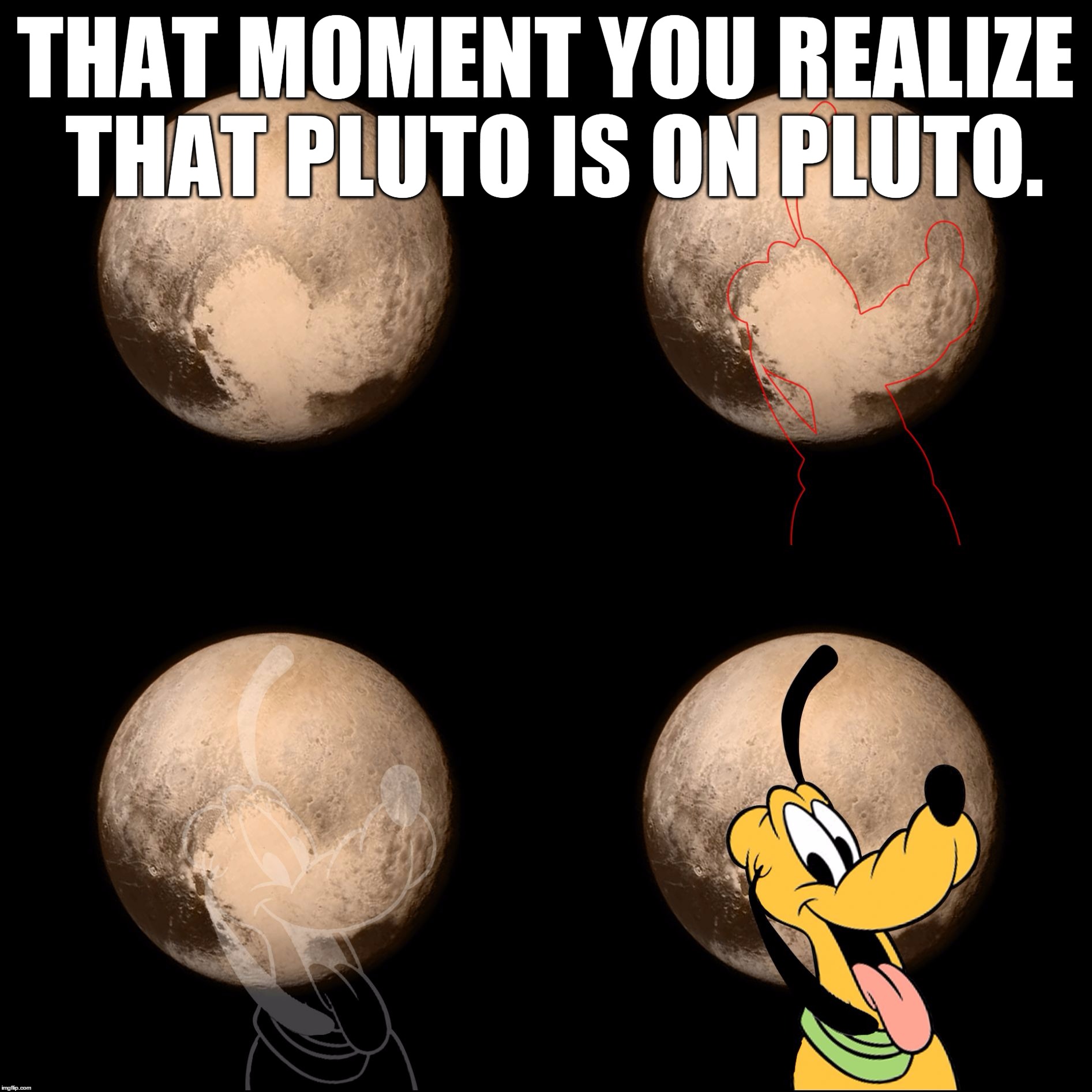
Posted on 07/14/2025 7:10:09 PM PDT by DoodleBob
For decades, Pluto remained one of the most mysterious objects in our solar system, until July 14, 2015, when NASA's New Horizons spacecraft became the first mission to visit it up close, capturing breathtaking images of the distant world.
It took over nine years for New Horizons to reach Pluto after blasting off atop an Atlas 5 rocket on Jan. 19, 2006. After traveling billions of miles through the solar system, New Horizons sent home stunning images of Pluto and its moons, making headlines around the world.
It took more than 15 months for the spacecraft to send all of the 6.25 gigabytes of photos and data home for scientists to study.
"Such a lengthy period was necessary because the spacecraft was roughly 4.5 light-hours from Earth and it could only transmit 1-2 kilobits per second," NASA said.
Here are some of the best images of Pluto and its moon Charon:

This image of haze layers above Pluto limb was taken by NASA New Horizons spacecraft. About 20 haze layers are seen. Photo courtesy of NASA

Pluto nearly fills the frame in this image from NASA's New Horizons spacecraft. The image was taken on July 13, 2015, when the spacecraft was 476,000 miles (768,000 kilometers) from the surface. Photo by NASA.

NASA New Horizons scientists believe that the informally named feature Wright Mons, located south of Sputnik Planum on Pluto, and another, Piccard Mons, could have been formed by the cryovolcanic eruption of ices from beneath Pluto's surface. Photo courtesy of NASA and JPL

A detailed global mosaic color map of Pluto is based on a series of three color filter images obtained by the Ralph/Multispectral Visual Imaging Camera aboard New Horizons during the NASA spacecraft's close flyby of Pluto in July 2015. Photo by NASA and JPL

The International Astronomical Union (IAU), the internationally recognized authority for naming celestial bodies and their surface features, approved names of 14 surface features on Pluto in August 2017. Image from NASA, Johns Hopkins University Applied Physics Laboratory and Southwest Research Institute

An enhanced color mosaic of Pluto taken approximately 15 minutes before New Horizons' closest approach to Pluto. Image by NASA, Johns Hopkins University Applied Physics Laboratory and Southwest Research Institute

This image was made just 15 minutes after New Horizons' closest approach to Pluto on July 14, 2015, as the spacecraft looked back at Pluto toward the sun. Photo courtesy fo NASA and JPL
The Pluto flyby changed what astronomers thought they knew about that tiny world. Instead of being just a cold rock, Pluto turned out to have ice mountains as tall as the Rockies, strange heart-shaped plains and even signs of possible underground oceans.
The mission also gave us our first close-up look at Pluto's largest moon, Charon, which has deep canyons and a huge dark spot at the pole.
It was like discovering a whole new world hiding at the edge of our solar system.
Ping
So those are pictures of the surface of Pluto?
A detailed map of a typical snowball would look more or less the same. Yet one should be labelled a planet while the other just something you throw at the back of someone’s head.

Yes.
New Horizons is another example of American exceptionalism.
The Ninth Planet
Planet Again!
Exactly.
Alan Stern, one of the principals on the New Horizons project, said “Voting is a terrible mechanism of doing science,” he said. “We don’t vote on the theory of relativity. We don’t vote on quantum mechanics. The image of the IAU taking a vote was the single most damaging pedagogical event in science in probably a century, because to many people it was easy to reach the conclusion that science is arbitrary or political, which it is not.”
I still think the first of Pluto’s moons should have been named Goofy.
"To Pluto And Far Beyond" By David H. Levy, Parade, January 15, 2006 -- We don't have a dictionary definition yet that includes all the contingencies. In the wake of the new discovery, however, the International Astronomical Union has set up a group to develop a workable definition of planet. For our part, in consultation with several experienced planetary astronomers, Parade offers this definition: A planet is a body large enough that, when it formed, it condensed under its own gravity to be shaped like a sphere. It orbits a star directly and is not a moon of another planet. The Nine Planets search results
Uranium was discovered around the same time that the American Constitution went in effect. Named after the newly discovered planet Uranius. The next element was Neptunium. Plutonium after that at #94. So far out from the sun the probe New Horizons could not use solar power. What was the power source? Plutonium !
beautiful. I was so blown away by Pluto when the pictures came back.
Disclaimer: Opinions posted on Free Republic are those of the individual posters and do not necessarily represent the opinion of Free Republic or its management. All materials posted herein are protected by copyright law and the exemption for fair use of copyrighted works.